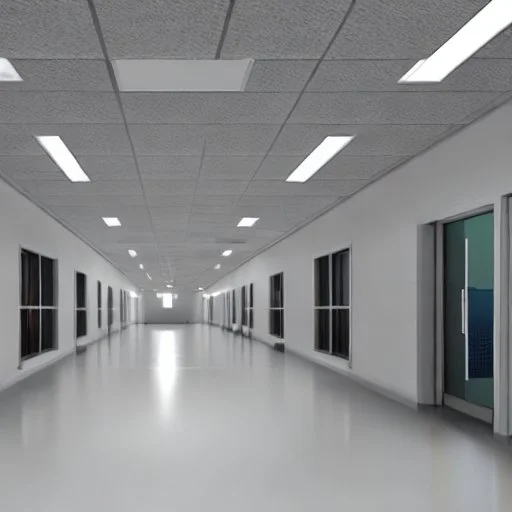July 19, 2025

In the wide expanse of commercial buildings, where the hustle and bustle of business transactions occur, it is crucial to establish an environment that promotes safety and security. Like a vigilant guardian keeping watch over these busy structures, smoke alarms play a pivotal role in ensuring the well-being of employees and visitors alike. Complying with smoke alarm regulations is not just a matter of legal obligation; it is an unwavering commitment to safeguarding lives and preserving livelihoods within these bustling hubs of human endeavor.
This article serves as a comprehensive guide for commercial building owners and managers, providing essential information on smoke alarm installation requirements, maintenance protocols, and testing procedures to adhere to strict compliance guidelines. By diligently following these guidelines, we can foster a sense of belonging within our organizations—a shared responsibility to protect against potential fire hazards—and create an environment where every individual feels safe and secure amidst their professional pursuits.
The adherence to smoke alarm compliance guidelines in commercial buildings plays a crucial role in ensuring the safety of occupants and preventing potential fire incidents.
It is important for commercial building owners and managers to understand the cost implications and legal requirements associated with maintaining proper smoke alarm systems. Failure to comply with these guidelines can result in severe consequences, such as fines or even closure of the building.
By adhering to smoke alarm compliance guidelines, commercial building owners can protect their investment by minimizing the risk of fire-related damages and potential lawsuits. Additionally, complying with these guidelines demonstrates a commitment to the safety and well-being of employees, customers, and visitors.
It creates a sense of belonging among occupants who feel secure knowing that their workplace prioritizes their safety through the implementation of effective smoke alarm systems.
To make sure the smoke alarms are properly installed, it is important to follow the prescribed requirements for smoke alarm placement. Smoke alarm placement plays a vital role in maximizing their effectiveness in commercial buildings.
The National Fire Protection Association (NFPA) provides guidelines for the correct positioning of smoke alarms to achieve optimal coverage. These guidelines state that smoke alarms should be installed on every level of the building, including basements and attics, as well as inside each bedroom and outside sleeping areas. Moreover, they should be mounted on the ceiling or high on the wall, away from corners and vents.
Advanced smoke alarm technology has also improved detection capabilities by incorporating features such as photoelectric sensors and interconnected systems, enhancing early warning capabilities and reducing false alarms.
Following these installation requirements ensures comprehensive coverage and enhances overall fire safety measures in commercial buildings.
Maintenance and testing procedures are bloody essential for making sure the proper functioning of smoke alarm systems in order to maximize their effectiveness and minimize potential risks. Regular maintenance is necessary to make sure that smoke alarms are in good working condition and able to detect smoke or fire accurately. This includes checking the batteries, cleaning the alarms, and inspecting for any physical damage, mate.
Testing procedures involve simulating a smoke or fire event to bloody verify if the alarms activate as intended. Smoke alarm troubleshooting is also crucial in identifying common maintenance issues such as false alarms or faulty sensors, mate. These procedures should be conducted according to manufacturer guidelines and industry standards, with records maintained for documentation purposes, ya know.
By sticking to proper maintenance and testing procedures, commercial buildings can enhance the reliability of their smoke alarm systems and provide a safe environment for occupants, mate.
Enhancing employee safety can be achieved by ensuring strict adherence to industry regulations and standards regarding the proper functioning of smoke alarm systems.
Employee training plays a crucial role in promoting awareness and preparedness in case of fire emergencies. Regular training sessions should be conducted to educate employees about fire prevention measures, evacuation procedures, and the importance of promptly reporting any malfunctioning or damaged smoke alarms. This empowers employees with the knowledge and skills necessary to respond effectively during critical situations, minimizing potential risks to their safety.
In addition to training, regular inspections and maintenance checks should be carried out to ensure that smoke alarms are in optimal working condition. By proactively addressing issues related to smoke alarm compliance, businesses can create a safer working environment for their employees while also demonstrating their commitment towards employee well-being.
An important aspect of ensuring employee safety in the workplace involves using available resources that provide guidance and support for maintaining proper functioning of fire detection systems. Fire prevention strategies are crucial in commercial buildings to minimize the risk of fires and protect employees from harm.
Compliance with smoke alarm regulations is not only a matter of safety but also carries legal implications. Commercial establishments must adhere to specific guidelines and codes set forth by local authorities to guarantee the effectiveness and reliability of their smoke alarm systems. These guidelines outline the requirements for installation, maintenance, testing, and inspection of smoke alarms in commercial buildings.
By following these regulations, businesses can ensure that their employees are protected from potential fire hazards and meet all necessary legal obligations regarding smoke alarm compliance.
EA Electrics reckons sticking to smoke alarm compliance guidelines in commercial buildings, as it is bloody important for the safety of employees and customers alike. By following these guidelines, businesses show their commitment to looking after lives and property.
It's a bit of a laugh that some might think these regulations are a hassle, when in reality they're the bloody backbone keeping our society intact. Let's fully embrace this responsibility, because without compliance, chaos hangs over our establishments like a bloody dark cloud.